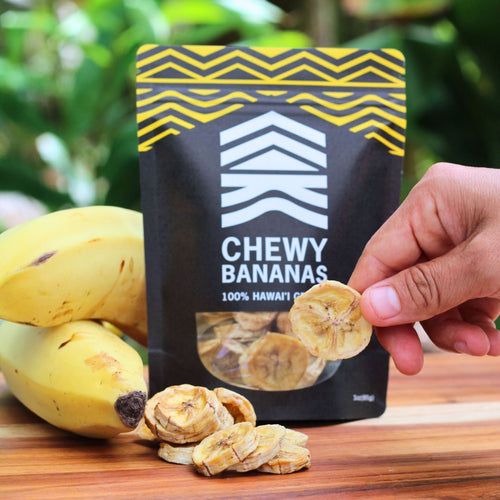Nā Wai ʻEhā is THE place for Hawaiian-style farming.
Nā Wai ʻEhā, which translates as "The Four Waters," refers to four prominent waters—Waikapū, Wailuku, Waiehu, and Waiheʻe—that flow through the valleys of West Maui. Polipoli Farms sits in Waiehu and an ʻauwai (stream ditch) runs through this area.
Waters of Nā Wai ʻEhā were historically used to irrigate taro fields (lo'i kalo) and other crops. Taro, a staple of the Hawaiian diet, was cultivated extensively in these fertile valleys, fostering a deep connection between the land + water + people.
Fun fact: Nā Wai ʻEhā is Maui’s largest ground water aquifer, supplying more than 70% of our island’s water needs
Polipoli delivers a SHOCKING discovery.
When we arrived on this ʻāina, it was covered in thick and towering guinea grass. Towering invasive trees like albizia and Hong Kong orchid created an ominous canopy that shaded out everything below.
As we cleared the land to prepare for farming, we were overjoyed to find that the traditional terraces used for growing kalo (taro) were still intact! This was a powerful reminder that Polipoli Farms sits on the same ʻāina that fed countless generations of Native Hawaiians.
Today, we’re reviving that legacy.
Fun fact: Nā Wai ʻEhā was once the largest contiguous loʻi kalo region in the entire state—it sustained an estimated 3,000+ acres in 1848.
More SHOCKING discoveries.

As we cleared the invasives, we also uncovered an ancient rock wall that stands about three feet high and at least 50 feet long.
Near the rock wall we also discovered an extra special artifact, something we like to think of as the “O.G. food processor.”
These physical reminders show us that what we might consider “ancient history” is still alive and relevant today.
Fun fact: Nā Wai ʻEhā was the main ritual and political center of Maui, including the largest concentration of documented heiau (place of worship).
Why does this matter?

The simple answer: Our Indigenous ancestors created a food system blueprint for our own survival.
Their style of agriculture utilized regenerative farming methods that were in harmony with nature. Techniques such as ahupuaʻa (land management system), mulching, and loʻi kalo terracing minimized environmental impact and maintained the health of the land over generations.
Traditional practices promoted biodiversity by cultivating various crops and maintaining a balanced ecosystem (basically the opposite of monocrop industrial agriculture). The result is healthier ʻāina + healthier humans.
The good news: this wisdom isn’t something stuck in the past. It’s essential for our survival today, and into the future.


0 comments